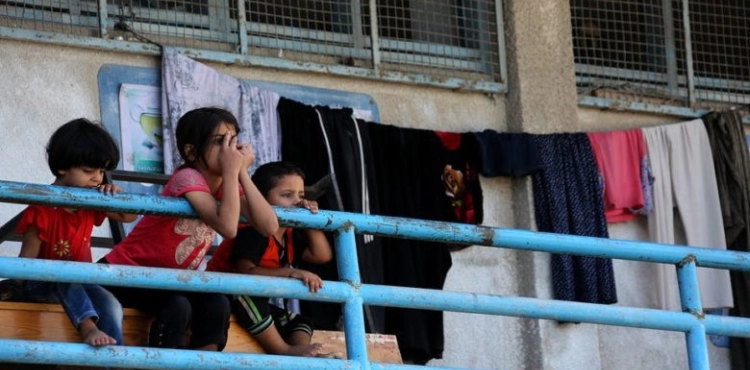The Minister of Health, The World Health Organization (WHO) presented a report on the health conditions in Palestine and the occupied Syrian Golan at a meeting of the 72nd World Health Assembly, held in Geneva, where it revealed the crimes and abuses of the Israeli occupation against the Palestinian health sector.
She added d. Al-Kila said in a press release on Wednesday that the report will discuss the Palestinians´ vulnerability to violence. Last year, 299 Palestinians were killed and 30,000 wounded. Of them, 6239 were wounded with live bullets, 113 of them were amputated, 21 were paralyzed, Permanent loss of sight.
Mental health is one of the most important challenges to public health, and more than half of the children affected by Israeli attacks in the Gaza Strip may be exposed to post-traumatic stress disorder, In addition, some 210,000 people suffer from severe or moderate mental health disorders in the Gaza Strip.
The report said that Palestine is one of the most burdensome mental disorders among adolescents in the Eastern Mediterranean Region, where about 54% of boys and 47% of girls between the ages of 6 and 12 years have emotional or behavioral disorders.
Hundreds of attacks on health facilities and staff
The World Health Organization (WHO) reported 363 Israeli attacks and attacks on health care in the Gaza Strip last year, of which 362 occurred since the outbreak of the major march. Three health workers were killed by live ammunition, 565 were injured, 85 ambulances were damaged, The Office of the United Nations High Commissioner for Human Rights indicated that health workers had been attacked while trying to reach the injured while they were being treated, and that the health teams had been denied access to the injured.
In the West Bank, the ICRC recorded 60 attacks by the Israeli occupation on health care in 2018. Most of the recorded attacks included preventing ambulances and medical personnel from reaching and injuring patients, and preventing six mobile clinics from reaching communities (C) For periods of up to two weeks, the Israeli army confiscated a vehicle belonging to the Ministry of Health, while two clinics and a hospital were damaged due to incidents of militarization of health facilities.
The agency added that a number of incidents monitored by UNHCR confirms the neglect of Israeli soldiers in providing medical assistance to Palestinians with fatal injuries.
Obstructing patients´ access to health centers
The report of the World Health Organization (WHO) confirmed that large Israeli checkpoints obstructed movement between Palestinian cities and the transfer of patients. In 2018, 140 permanent checkpoints and 2254 mobile checkpoints were registered inside the West Bank.
Ambulance traffic is affected by these points, with 35 incidents in which ambulances were prevented from reaching their places as a result of Israeli roadblocks, as well as the entry of patients from the West Bank to Jerusalem hospitals. According to the Palestinian Red Crescent Society 84% of the 1,462 registered ambulances transported patients from one ambulance to another, resulting in delayed passage of patients and admission to hospitals. Access to mobile health clinics was also hindered due to the presence of these checkpoints and the separation wall and settlements.
The organization stressed that the division of the Israeli occupation of the West Bank led to the creation of categories of high-risk citizens in the classified areas (C), the seam areas, and the logic of Hebron in one of the population of these areas of 330,000 people are not available to 114,000 people (35) Of whom only a limited amount of primary health care.
Impact of the Paris Protocol on the prices of medicines
The report added that the lack of sovereignty of the Palestinian Authority on the ground affected its financial income and thus the sustainability of the government health sector, pointing out that the Paris Economic Protocol has implications for the affordability of medicines and the affordability of health care in general in Palestine. Is far superior to natural medicines compared with international reference prices, where import restrictions are a major contributing factor to price increases.












